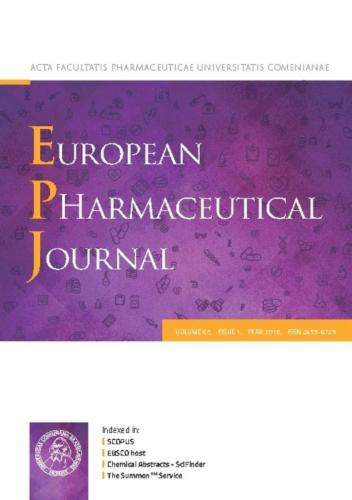Covalent binding of 5-tetradecyloxy-2-furoic acid (TOFA) and c(RGDfK) and its co-delivery with Lipusu, a novel synergistic strategy to inhibit the proliferation of nasopharyngeal cancer
IF 4.3
3区 医学
Q1 PHARMACOLOGY & PHARMACY
引用次数: 0
Abstract
As the world's only commercially available paclitaxel liposome, Lipusu (Lip) has been clinically used in chemotherapy for >20 years, but the design concept of Lip remains largely unchanged since its initial development. Based on the study of Acetyl-CoA-carboxylase 1 (ACC1) in nasopharyngeal carcinoma (NPC), we proposed the concept of next-generation liposomes (NGL) utilizing lipid demand balance. In this study, we evaluated the feasibility of ACC1 and integrin αVβ3 as NPC targets, and designed 10 conjugates of 5-tetradecyloxy-2-furoic acid (TOFA) and c(RGDfK) that can bind to Lip. Considering the results of chemical parameter prediction, molecular docking, molecular dynamics simulation (MD) and other aspects, we finally selected and synthesized the compound F, and successfully constructed F-Lip by simple incubation method. Compared with Lip, F-Lip showed stronger toxicity in both HONE-1 cells and corresponding tumor-bearing mice. In conclusion, by regulating the balance of lipid demand, the toxicity of Lip can be improved so as to achieve the goal of inhibiting the proliferation of NPC. This study provides a new model for the future design and development of Lip.

5-十四环氧基-2-呋喃酸(TOFA)和c(RGDfK)的共价结合及其与利普素的共递送,一种抑制鼻咽癌增殖的新型协同策略
作为世界上唯一的市售紫杉醇脂质体,Lipusu (Lip)临床应用于化疗已有20年,但Lip的设计理念自最初开发以来基本没有改变。基于对鼻咽癌(NPC)中乙酰辅酶a羧化酶1 (Acetyl-CoA-carboxylase 1, ACC1)的研究,我们提出了利用脂质需求平衡的下一代脂质体(NGL)的概念。在本研究中,我们评估了ACC1和整合素αVβ3作为NPC靶点的可行性,设计了10种可与Lip结合的5-十四环氧基-2-呋喃酸(TOFA)和c(RGDfK)偶联物。综合考虑化学参数预测、分子对接、分子动力学模拟(MD)等方面的结果,我们最终选择并合成了化合物F,并通过简单的孵育法成功构建了F- lip。与Lip相比,F-Lip对one -1细胞和相应的荷瘤小鼠均表现出更强的毒性。综上所述,通过调节脂质需求平衡,可以提高Lip的毒性,从而达到抑制NPC增殖的目的。本研究为今后Lip的设计和开发提供了一种新的模型。
本文章由计算机程序翻译,如有差异,请以英文原文为准。
求助全文
约1分钟内获得全文
求助全文
来源期刊
CiteScore
9.60
自引率
2.20%
发文量
248
审稿时长
50 days
期刊介绍:
The journal publishes research articles, review articles and scientific commentaries on all aspects of the pharmaceutical sciences with emphasis on conceptual novelty and scientific quality. The Editors welcome articles in this multidisciplinary field, with a focus on topics relevant for drug discovery and development.
More specifically, the Journal publishes reports on medicinal chemistry, pharmacology, drug absorption and metabolism, pharmacokinetics and pharmacodynamics, pharmaceutical and biomedical analysis, drug delivery (including gene delivery), drug targeting, pharmaceutical technology, pharmaceutical biotechnology and clinical drug evaluation. The journal will typically not give priority to manuscripts focusing primarily on organic synthesis, natural products, adaptation of analytical approaches, or discussions pertaining to drug policy making.
Scientific commentaries and review articles are generally by invitation only or by consent of the Editors. Proceedings of scientific meetings may be published as special issues or supplements to the Journal.

 求助内容:
求助内容: 应助结果提醒方式:
应助结果提醒方式:


